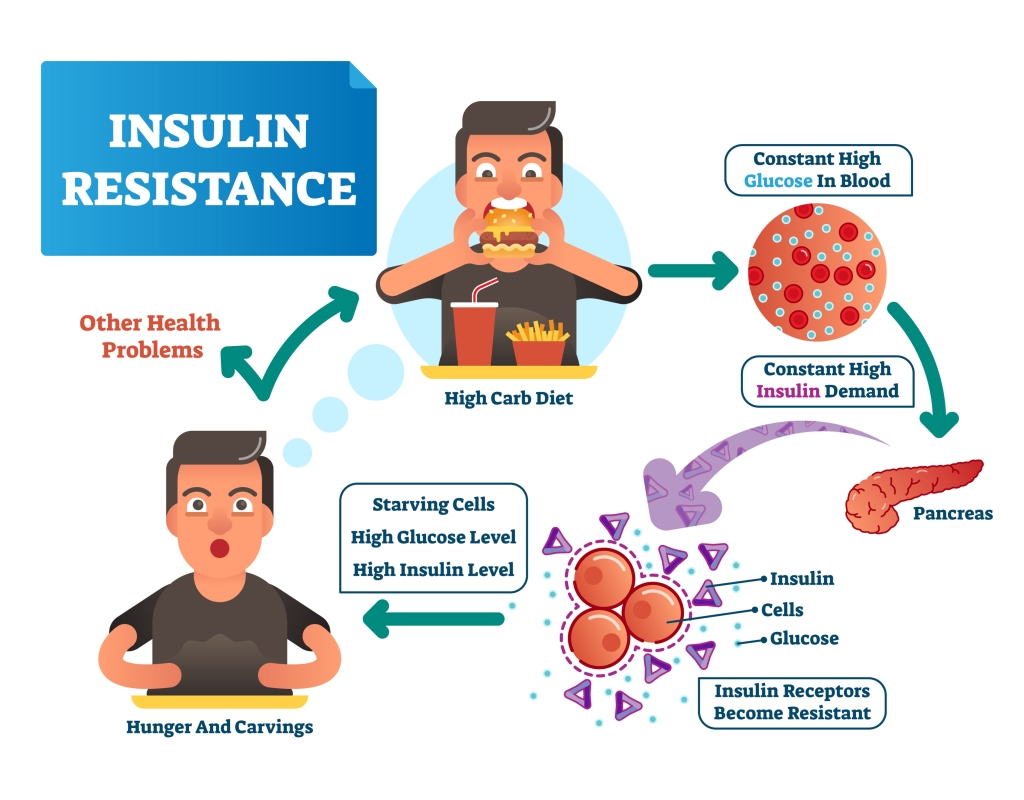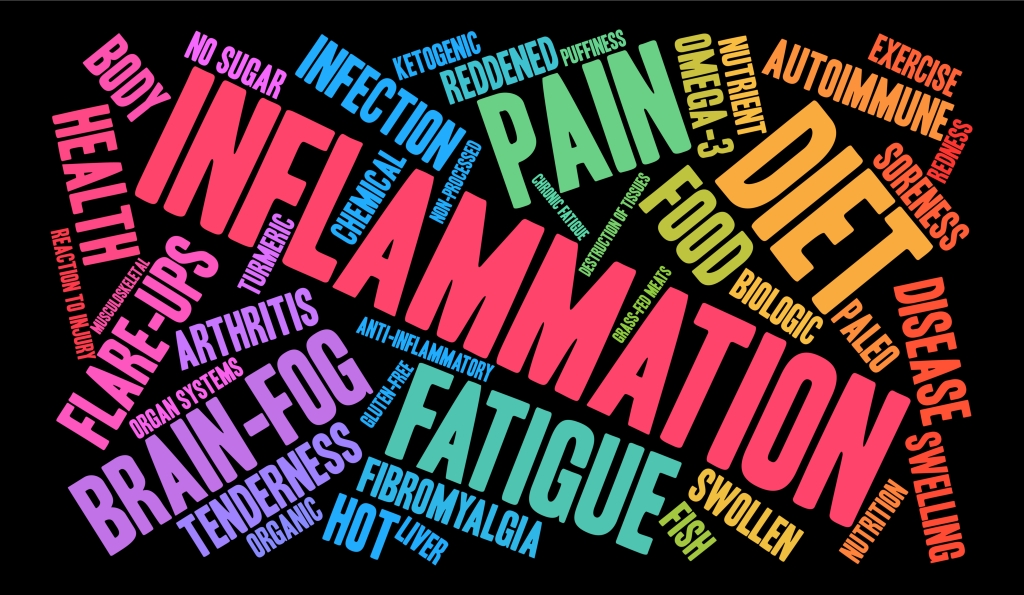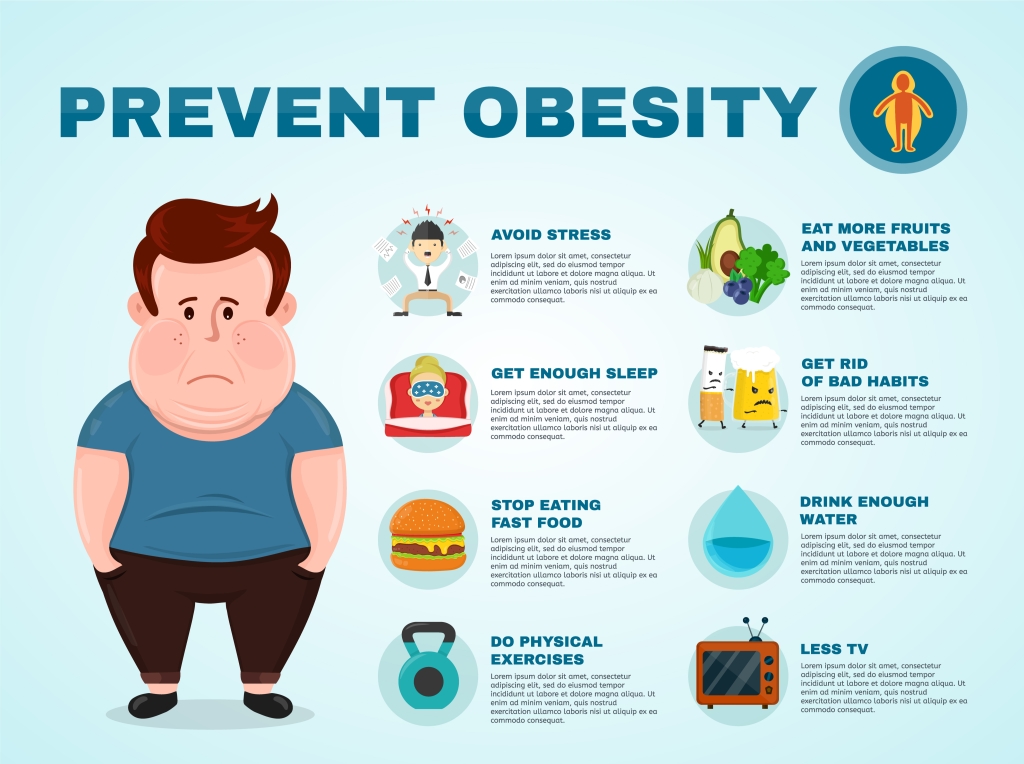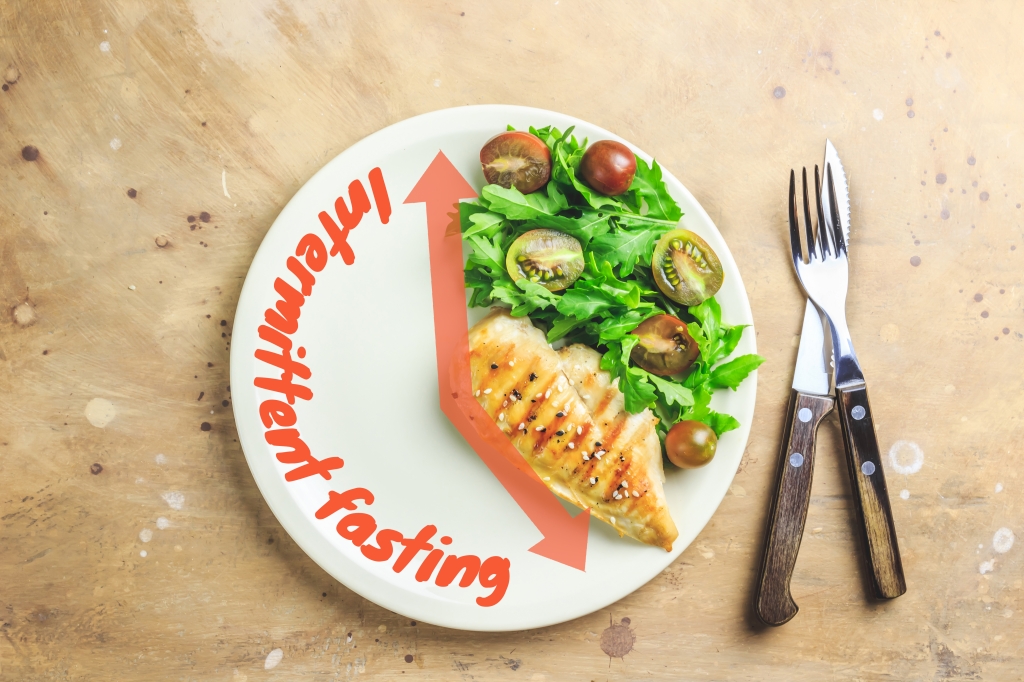If you haven’t heard the word “Diabesity”, I’m sure you can easily pick up on what it revolves around and probably even hear both the words diabetes and obesity molded together to coin this modern word here.
The way we describe things changes often with the world. We look to describe new phenomena with new words. Just think of “bromance” – which is a newer term used to describe a strong bond or friendship between two men in a non-sexual way.
It is very well known there is a strong link between obesity and type 2 diabetes. Let’s also be clear there is a fundamental difference between type 1 diabetes versus what we will focus our attention on here with type 2 diabetes. These two are actually polar opposites with type 1 characterized by very low insulin levels and type 2 by very high insulin levels.
This article is going to cover and explain both diabetes and obesity and how to address and combat “diabesity” in our efforts to flatten the curve of its alarming and continuous rise and all the detrimental comorbidities that come with it.
Type 1 Diabetes
Type 1 diabetes is an autoimmune disease – meaning, the body’s immune system attacks insulin producing cells. Insulin is the hormone responsible for regulating blood sugar levels and helping to enable the shuttling of glucose out of the circulatory system and stowing into the liver and muscles for later energy use.
When the body doesn’t produce enough insulin, circulating blood sugar levels spike to dangerously high levels and can’t get to where it needs to go. This is why type 1 diabetics rely on daily insulin shots to live.
Type 2 Diabetes
The cause of type 2 diabetes however is different. It’s typically the result of a poor, high sugar diet coupled with being sedentary. The body responds here by repeatedly producing large quantities of insulin in an attempt to regulate all the ingested sugar that continues to happen time and time again.

After living this lifestyle over time, the body’s cells eventually become insulin resistant… They no longer respond to insulin because there is just too much of it in the body and receptors have become desensitized to it, not to mention accumulated fat and more contributing to the “blocking” of being able to receive and utilize insulin as well.
So, adding in insulin injections is surely not appropriate here in a situation like this with type 2 diabetes. The problem here isn’t a lack of insulin as it is with type 1 diabetes but rather TOO MUCH insulin and a poor ability by the body to address it along with accumulated and high blood glucose.
What is needed here, is to help the body to once again regulate and respond to insulin and address the excessive amounts of glucose wreaking havoc within the body.
“Eat Less Calories And You Will Lose Weight”
Although this is true, it’s an over simplified statement that leaves out another vital component to the problem. Obesity almost always comes with a hormonal imbalance, not just a caloric one. The hormonal problem with undesired weight gain is excessive amounts of insulin in the vast majority of cases in today’s modern and industrialized food world.
Insulin can be easily thought of as a storing hormone. If you don’t use what you consume, your body needs to store those extra calories. Insulin is a BIG player here. This is the short, elementary and simple way of remembering this one without getting into a ton of detail.
And the hormone insulin isn’t the only player here as we will also see dysregulation and dysfunction of two other hormones as well – leptin and ghrelin, which tend to flow with chronically elevated insulin, largely and often stemming from insulin resistance.
Without getting off topic or going down other rabbit holes; In short, leptin is a hormone released from fat cells and sends signals to the hypothalamus in the brain. This then helps to regulate and alter long-term food intake and energy expenditure, not just from one meal to the next. The primary design of leptin is to help the body maintain its weight.
I like to think of Leptin as being the intended satiety hormone that communicates to our brain saying “I’m full and no longer hungry”.
And as for ghrelin: Again in short and without going off topic, ghrelin sends a signal to your brain to feel hungry. It also – on the flip side here, plays a key role in regulating calorie intake and body fat levels.
I like to think of ghrelin as the “hungry stomach growling” hormone to easily remember its function. Food is essential to stay alive, so ghrelin’s purpose is an important one here in telling us when we need to eat and consume energy.
These actions from within happening on repeat day after day with these imbalanced hormones and signals start to contribute to metabolic syndrome and living in a metabolically broken body. You can maybe start to see the snowball effect that happens here?
Frankenstein Foods Fuel Inflammation, Not The Body

When we consume a diet largely consisting of highly processed, hyper palatable foods void of nutritional value – because they are, the result is excessive amounts of calories or energy the body can’t use while simultaneously not providing enough vital micronutrients our bodies require on a more cellular or micro level. This in turn leaves our cells “starving” for what they need to perform at an optimal or desired level.
Couple this with a fatty liver, high body fat, low grade chronic inflammation and more and we have a situation where the body becomes less sensitive to insulin which then distorts the communication system and ability for leptin to deliver it’s satiety signals to the brain all while at the same time the body is being starved on a cellular level which then sends out ghrelin hunger signals to summon its requests for needed nutrients and food.
Never feeling full enough and always feeling hungry leads to eating more than we should. Continue consuming the same highly processed, hyper palatable foods and it simply contributes time and time again to this vicious cycle. And this isn’t even mentioning the altering of our pallet for foods and the dopamine and reward signals that are hijacked in the brain from eating these manufactured frankenstein foods either but, that is a story for another day.
Again and maybe even more so now, you are seeing the snowball effect happening here? This is all describing a very typical, modern day American body that is metabolically broken.
Politics, Money and Corruption
And when we think this epidemic of diabetes and obesity couldn’t get any worse, it did and has over the last two years.
People were encouraged to stay home and not to go outside. We encouraged more booze, fast food, being sedentary and not going to the gym or participating in our favorite activities to stay active while being bribed with free Krispy Kreme donuts, despite science emphasizing the opposite.
We encouraged people to become more unfit and obese, despite science emphasizing otherwise. We discouraged being social while encouraging isolation and depression. Relationships have been eroded along with small businesses and bank accounts.
All this despite the 62,000 + infectious disease epidemiologists, public health scientists and medical practitioners that have all tried screaming from the mountain tops for the last two years emphasizing we need to do the opposite (12).
All of this and more, has encouraged bigger daily caloric intakes for the masses, increased stress and more hormonal imbalances than ever before. We have turned a big problem into an even bigger one. We increased comorbidities and fat curves instead of flattening them – both in adults and children.
Our kids today are larger than ever, with an alarming and growing number of health problems and a bleak future of wellness once this next generation enters into adulthood.

So, what can we do as individuals to improve our health? And I say individuals because you’re fooling yourself if you think the same authorities who lead us deeper into this mess are going to help with the massive atrocity that has grown out of control. They won’t.
We need to learn, apply and act on our own for ourselves. Only we as individuals can improve our level of health and wellness. It is up to us to take ownership and action. It can be done! There is always a way and an answer!
All Calories Aren’t Equal
Consuming a 600 calorie meal consisting of baked chicken, broccoli and avocado versus 600 calories from pizza, garlic bread and soda is going to yield a drastically different reaction within the body. The hormonal response, the way the body partitions the nutrients and/or calories and so much more is DRASTICALLY different between these two examples.
Repeating the consumption of poor, processed food choices day after day, week after week and month and month versus eating real, low calorie colorful foods that are natural – and there without a doubt, will be a significant difference on many levels over time… Notable distinctions in waist lines, in metabolic function, in cellular health (think cancers, etc.) and much more.

All the subtle changes from poor choices slowly accumulate and start to have a compounding effect on our bodies and metabolic health. This is a very typical example of how many get categorized into the “diabesity” population.
The Struggle Is Real
Living in a noisy world now dominated by technology and with access to more information than ever before, it is ironically difficult for the average person to navigate it all and understand how to optimize our health and bodies.
Add in the heavily subsidized corn, sugar and essentially processed foods that are low cost, addictive and more enticing to purchase instead of highly priced produce and real, healthy food that is not encouraged nor affordable for so many, and this just adds to the frustration of choices so many are faced with making – especially those on limited incomes.
And, let’s not forget the millions upon millions of people – 66 percent of all adults in the United States that use prescription drugs (2). Research shows that the average older adult regularly takes four or more prescription drugs each day, many of which are being used to address health concerns and complications from being overweight and in poor metabolic health.
Our bodies are not designed to handle these heavy loads of foreign chemicals on a regular basis. This of course is why there are numerous side effects with most of these drugs – all of which are being heavily advertised and pushed on not only consumers but also those working within the health care system who have little to no training on nutrition and the significant influence and medicinal function (or destruction) of food on our bodies.
“People are fed by the food industry, which pays no attention to health, and are treated by the healthcare industry, which pays no attention to food.”
– Wendell Berry
You can start to see how big pharma and their influence on government regulations and also how government subsidization influencing the agriculture industry heavily play into the choices we make and what we put into our bodies which is tightly tied to our status of health and wellness.
This devastating story could keep going on and on with the impacts on the national healthcare systems and more with sidetracking down numerous rabbit holes to dissect all this. But I digress…
In short, it is a challenge from many angles and for most people to eat correctly as there are a lot of obstacles and challenges to navigate; financial, health literacy, political corruption, dishonest marketing and more.
I empathize with the average American being confused and frustrated with it all.
Fixing Diabesity and Where To Start
So, where does one start in the quest to steer away from diabesity? Is being healthier, more energetic and having a body that actually feels good to live in important to you?
If any of this diabesity talk resonates and applies, then hopefully you can at least have a loose understanding of the gasoline being thrown on the fire at this point and how we are being encouraged to choose and consume more gasoline daily. Radio, television, billboards, social media ads, etc. is relentless and always in our face. For a few, it makes a lot of dollars and cents despite that a lot of it doesn’t make sense for everyone else’s health and wellness.

We first need to do no harm if we are to start helping our body recover. We need to stop fueling our fires, reduce our body’s inflammation working against what our bodies want to do – which is to put the fires out, then thrive and be well.
In other words, we must FIRST strive to eliminate or at least cut back on processed foods in exchange for more real, plant based colorful ones.
Step 1 on Addressing Diabesity: Cut Sugar
An effective goal at the starting line for many is to simply stop drinking calories. This means no soda, no juices and essentially no drinks that are loaded with sugar. At the very least, cut your consumption in half for the first 3 days and go from there. Nothing wrong with working your way up.
Go for zero sugar, no calorie beverages. Obviously, water is the best choice here but there are other zero calorie options if you must have a little flavor with your water.
Step 2 on Addressing Diabesity: Resistance Training

A second suggestion would be to incorporate resistance training. Starting small is great, we all start somewhere. Simply starting with 10 minute walks or 10 squats in place with 10 push ups off a chair or side of a table is a small win.
Many of us have to crawl before we walk and walk before we run. The message here is simply to start. Begin with implementing and working towards solidifying the habit of being active and exercising a few times a week.
Muscle is metabolically active which helps increase our body’s metabolic rate. Resistance training supports building muscle and helps with bone density, endocrine health or hormonal balance, mood, energy and weight training can help prolong your life and the quality of it. It is an essential piece to help us be fit, strong and our healthiest in our quest to enjoy life in a body we feel good to live in.
Step 3 on Addressing Diabesity: Incorporate Tools
A third step would be to assist the body with nutrient partitioning by using modern day tools. These “tools” can be medications (if applicable or necessary) like Metformin. Or for others, over the counter supplements such as chromium picolinate, berberine or cinnamon – just to name a few helpful options that may assist with glucose regulation and partitioning.
Step 4 on Addressing Diabesity: Intermittent Fasting
Intermittent fasting are alternating periods of energy restriction. It is any of various meal timing schedules that cycle between voluntary fasting and non-fasting over a given time frame. Methods of intermittent fasting include alternate-day fasting, periodic fasting, and daily time-restricted feeding.

When done safely, intermittent fasting may provide some benefits for people with diabetes and reduce the severity of it’s impact. If the eating plan leads to weight loss, people may be able to reduce the amount of diabetes medication they take. This in and of itself if done correctly, can have a significant and positive impact on getting type 2 diabetes under control.
However, if you use insulin or medications and suddenly eat much less than normal, blood sugar can drop too low. This is called hypoglycemia. This being said, make sure to work with your doctor and/or a professional if you’re considering intermittent fasting to ensure you go about it correctly.
Step 5 on Addressing Diabesity: Hire a Coach
Step four could include seeking out a professional to assist you in navigating a healthy eating and/or workout program. The financial investment into a professional coach here would most likely save you tons of money, time and frustrations on the flip side from purchasing ineffective products or doing things incorrectly.
If you financially aren’t capable of investing in a coach, then finding some credible programs to work with remotely (online) may be something affordable to acquire some structure and guidance in your quest to better health.

Step 6 on Addressing Diabesity: Start with Simple, Small Steps
Keeping it simple is best when trying to adjust habits and make changes to our lifestyle as it pertains to healthy behavior changes. It has probably taken years and for some, a lifetime so far to find themselves where they are today. And that is okay, it is never too late to start reversing any damage!
Slow and steady will win the race. Set small goals that are attainable to start accumulating small wins and to build on that flow. We are creatures of habit and momentum – whether good or bad, and it influences us and our decisions day to day.
What are 2 things you can do this week that would be a healthy alternative to something not so healthy? Again, think small and easy… Start there and decide to start moving towards the healthier version you are capable of being. Life is brighter and more enjoyable when living in a body that feels good to be in!
Cheers to optimal health and wellness friends!
-Roger Bowman

References:
- https://www.agingcare.com/articles/polypharmacy-dangerous-drug-interactions-119947.htm
- https://hpi.georgetown.edu/rxdrugs/
- https://www.cdc.gov/nchs/products/databriefs/db334.htm
- https://www.statista.com/statistics/184914/prescription-drug-expenditures-in-the-us-since-1960/
- https://www.apha.org/~/media/files/pdf/factsheets/chronicdiseasefact_final.ashx
- https://www.behavioralhealthflorida.com/condition/health-behavior-changes/
- https://pubmed.ncbi.nlm.nih.gov/33354010/
- https://academic.oup.com/ndt/article/26/1/28/1838186
- https://clindiabetesendo.biomedcentral.com/articles/10.1186/s40842-016-0039-3
- https://www.youtube.com/watch?v=da1vvigy5tQ
- https://www.ncbi.nlm.nih.gov/pmc/articles/PMC6520897/
- https://gbdeclaration.org/#read
DISCLAIMER: Roger Bowman is not a doctor or registered dietitian. Any contents of this email coming directly from Roger Bowman and not being communicated from a medical doctor or registered dietitian should not be taken as medical advice. Any direct input from Roger Bowman is not intended to diagnose, treat, cure or prevent any health problem – nor is it intended to replace the advice of a physician.


You must be logged in to post a comment.